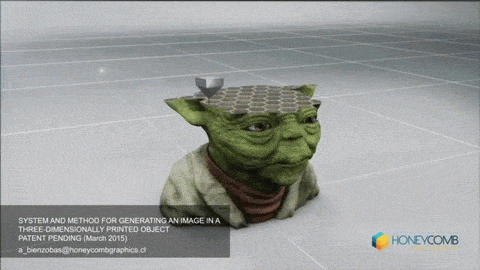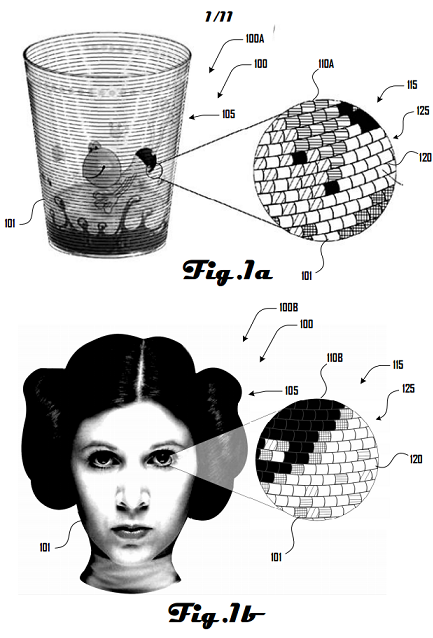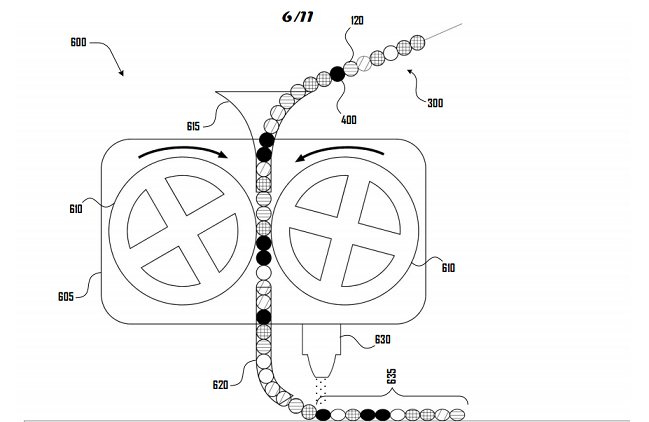 As 3D printing technologies progress and new paradigm shifts within the technology take place, we are bound to see fabrication broken down into increasingly tiny building blocks of sorts. Last month, we covered a presentation that HP’s Scott Schiller gave at 3D Print Week in New York, where he revealed that HP’s new Multi Jet Fusion technology would eventually be capable of fabricating objects based on single voxels, changing the color, material and composition of an object, one voxel at a time.
As 3D printing technologies progress and new paradigm shifts within the technology take place, we are bound to see fabrication broken down into increasingly tiny building blocks of sorts. Last month, we covered a presentation that HP’s Scott Schiller gave at 3D Print Week in New York, where he revealed that HP’s new Multi Jet Fusion technology would eventually be capable of fabricating objects based on single voxels, changing the color, material and composition of an object, one voxel at a time.
Certainly HP will not be the only company, or Multi Jet Fusion the only technology, which will advance to levels of accuracy allowing for such intricate fabrication.
In fact, earlier this week a company called Honeycomb Graphics published a video and revealed a recent patent application for a technology they call Solid Projection Printing (SPP). Founded in 2011 as a Joint Stock Company by Andrés Biénzobas in Santiago, Chile, Honeycomb Graphics has rather quietly been working on a technology which can print using 3D blocks as ‘razor-thin’ polymer squares or honey-comb shaped linings, among other incredibly interesting methods.

Fig. 1a is an exemplary perspective and zoom drawing illustrating an embodiment of
a three dimensional object that includes an image defined by a pixel array.
Fig. 1b is an exemplary perspective and zoom drawing illustrating another
embodiment of a three dimensional object that includes an image defined by a pixel array
In the patent application filed on February 6th of this year for a ‘System and method for generating an image in a three-dimensionally printed object,’ the company describes several possible processes of printing 2D images within 3D objects, with a degree of accuracy unavailable with other methods of printing currently available today (besides perhaps Mcor Technologies).
“Since currently-available additive manufacturing and 3D printing systems are deficient in creating images in three dimensional objects, a new system and method for generating images in three dimensional objects can prove desirable and provide a basis for a wide range of applications, such as generating color images in three dimensional objects,” explains the filing.
The patent, and Biénzobas’ website go on to detail several different methods of achieving the same basic outcome of multi-colored, voxelated prints for applications within advertising, architecture/constructions, and most interesting to us of course, 3D printing. The technology could work in several different ways, as described within the recent patent application. Below we’ve broken these methods down into three main categories:
Color Model Method
Using a coloring method like CMYK (cyan, magenta, yellow, black) this process is capable of dying filament in small segments as it enters the extruder, or after it’s already been extruded. An ink feeder is used which will feed ink to an injector which then colors the filament as it passes through the print chamber. Similar to a technology like Spectrom3D’s, this process functions at a much smaller, more accurate scale, allowing for not just layers, but individual voxels to be colorized with millions of different possible colors. This process can be better visualize by viewing the video directly below,. Interestingly enough, according to the patent application, various metals such as gold and chrome could also be used with this method.
Material and Property Changing Deposition Method
This is probably one of the more fascination sections of the patent applications. Here the company discusses a variety of different methods of changing the color of the material during the printing process. The easiest to understand of these methods, would be the use of tiny particles of material, such as filament in the form of spheres, cubes, or oval-like segments. These segments each consist of  their own color and would be ordered into a line as they enter the hot end, fusing together as they are placed onto the printed object or build plate.
their own color and would be ordered into a line as they enter the hot end, fusing together as they are placed onto the printed object or build plate.
The other possible methods would be to use specialized electrochromic polymers (polymers which change color based on bursts of electrical charges) which are then exposed to varying amounts of electricity determining their final printed color.
Finally, in a process similar to that used with the electrochromic polymers, thermochromic materials could be utilized and heated to specific temperatures to achieve a desired color or colors as they are deposited onto the already printed substrate.
Solid Fiber Piling
This method can use many differently colors of fiber polymer, placed down next to one another and on top of each other to define an image on a 3D object. This could be done by using bead-like polymer segments as shown in the video below. Basically this method would place the fibers down, only paying attention to the X and Z axes, as the Y-axis will remain squared off, leaving more of a blocky object. This method seems to generally be intended for advertising media as the objects can quickly be sliced to make numerous 2D copies. Take for example vinyl signage. It’s hard to describe, so just watch the video below.
According to the company, the key technologies required for these processes have been developed since 2007, but only recently has the company obtained the necessary funding to begin development, seek industry alliances, and file the patents needed to move things forward. The company currently has a patent pending status in 75 different countries and seems to be keen on pushing this technology forward within the 3D printing space.
Let’s hear your thoughts on these new, potentially disruptive methods of 3D printing and what they may ultimately mean for the industry. Discuss in the Honeycomb Graphics forum thread on 3DPB.com.

Fig. 6 illustrates a depositing module that comprises a pair of wheels disposed within
a housing, which is configured to deposit a line on a substrate
Subscribe to Our Email Newsletter
Stay up-to-date on all the latest news from the 3D printing industry and receive information and offers from third party vendors.
You May Also Like
Gorilla Sports GE’s First 3D Printed Titanium Cast
How do you help a gorilla with a broken arm? Sounds like the start of a bad joke a zookeeper might tell, but it’s an actual dilemma recently faced by...
Nylon 3D Printed Parts Made More Functional with Coatings & Colors
Parts 3D printed from polyamide (PA, Nylon) 12 using powder bed fusion (PBF) are a mainstay in the additive manufacturing (AM) industry. While post-finishing processes have improved the porosity of...
$25M to Back Sintavia’s Largest Expansion of Metal 3D Printing Capacity Since 2019
Sintavia, the digital manufacturing company specializing in mission-critical parts for strategic sectors, announced a $25 million investment to increase its production capacity, the largest expansion to its operations since 2019....
Velo3D Initiates Public Offering in a Bid to Strengthen Financial Foundations and Drive Future Growth
Velo3D (NYSE: VLD) has been among a number of publicly traded 3D printing firms that have attempted to weather the current macroeconomic climate. After posting a challenging financial report for 2023,...





























